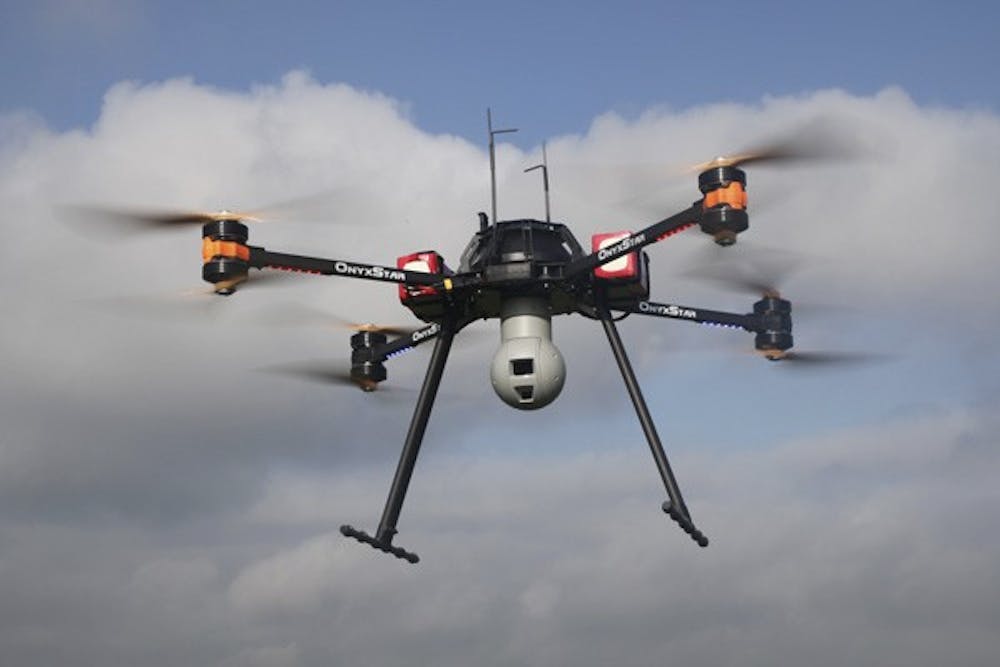
The Penn Aerial Robotics Club took top marks at an international competition this year, raising the bar for next year's contest. | Courtesy of Wikimedia Commons
This year, Penn’s Aerial Robotics Club swept the competition at the International Aerial Robotics Competition in Atlanta by winning the best technical paper, beating out the likes of teams from the Massachusetts Institute of Technology, the Georgia Institute of Technology and international universities.
Penn’s quad-copter also led the field by being the only robot in the competition to attempt fully autonomous flight.
The club kicked off its third year in style. Wharton and Engineering senior and president of the Aerial Robotics Club Lukas Vacek said that their mission is to “engage mainly undergraduate students at the University of Pennsylvania with the design and building of aerial robots, UAVs, and other autonomous types of robots.”
Currently, the club participates in four annual competitions, constructing flying robots capable of completing different tasks, from transporting various objects between locations to guiding robots on the ground to a target. There are approximately 25 members in the club, who are split into teams of designing, programming, and building quad-copters and other machines for each competition.
Despite being comprised of mostly undergraduate engineering students, the Aerial Robotics Club does have students in the College of Arts and Sciences , along with a few graduate students. The club recently added business and marketing departments to garner funding and sponsorships to continue its development. This has opened up opportunities in the club for students who aren’t from physics or computer science backgrounds.
Engineering sophomore Yi Meng Su, who is vice president of public relations for the club, was excited for the upcoming Society of Automobile Engineers competition in April, saying that she looks forward to designing and building their next creation. Although the club is only in their second year of participating in competitions, they hope to continue their winning form after the last competition.
Engineering senior and lead engineer for the club, Ben Kramer, outlined his vision, saying he believed firmly that Penn Aerial Robotics can become a formidable force in the sphere of collegiate aerial engineering. He said that now the club “has a really solid base of people, solid members, solid funding,” and that they hope to succeed even more in the future.
Penn Aerial Robotics now has something to prove in the IARC in August of next year. They have yet to perfect their design to meet the challenge of guiding ground robots with their autonomous flying quad-copter. The aim of this particular competition is to continue attempting increasingly difficult tasks until one school’s team is able to achieve the goal. Penn has a sizable head start over the contending schools for next year, since they were the only team to complete semi-autonomous flight this year.
Kramer summed up his experience and encouraged other Penn students to apply for the club next year, saying, “I just really love working on robots.”
The Daily Pennsylvanian is an independent, student-run newspaper. Please consider making a donation to support the coverage that shapes the University. Your generosity ensures a future of strong journalism at Penn.
DonatePlease note All comments are eligible for publication in The Daily Pennsylvanian.







